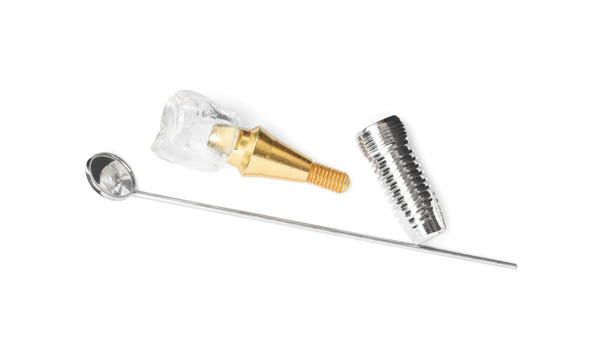When missing or damaged teeth need to be replaced, a visit to an implant periodontist can restore uniformity and function in the mouth through dental implants. The process of replacing missing teeth can take several months to complete, and knowing what to expect during the process can make the transition go more smoothly. From the consultation to the final results, here are the steps for pursuing dental implants.
Preparing for dental implants
Many people prefer implants over crowns, bridges, and veneers because of the permanency they offer. In this process, tooth roots are replaced by tooth posts made from metal. These posts become the foundation for artificial teeth that are screwed in to look and act like natural teeth.
Initial assessment
An implant periodontist starts the process with an initial evaluation of the mouth and jawbone. In this exam, the condition of the jawbone is evaluated to see if it can sustain the implants. X-rays are taken, an impression of the teeth is done, and a color match is made to ensure the implant is as natural-looking as possible. The consultation and assessment can decide how many teeth are to be replaced with implants.
Oral preparation
Prior to any dental work, pieces of remaining teeth may need to be removed before the implant is inserted. The decision of when to have this done should be made on the advice of the dental professional. Extraction is a quick procedure and can sometimes be done at the time of implant insertion. The condition of the jawbone also determines whether bone grafting must be done. If the jawbone is strong and thick, grafting is not needed. However, if a graft is required, the site must heal before implants can be inserted.
After the implant is added, the jawbone grows around it. The new growth places the implant in the natural gum line. It can take several months before this growth is achieved. After the implant is bonded with the bone, the abutment can be placed. This is the small connecting piece that attaches the artificial tooth to the implanted post. It must be tight in order to remain rigid and stable while chewing. A protective cap may be placed over the abutment to prevent bone or tissue from growing over it.
Artificial tooth placement
Once the gums have healed, an artificial tooth or crown is constructed to match the existing teeth in both color and shape. This artificial piece can be attached permanently, or some prefer to have a removable tooth. Those who require multiple implants may want a removable option for cleaning and replacement ease. A fixed implant is secured using cement.
Following the procedure
In the few days to weeks following these procedures, it is common to feel mild discomfort or to notice some bruising or swelling around the gums. Your dentist will likely suggest or prescribe pain medication to help; follow the dosing instructions carefully. It can be helpful to take some medications on an around-the-clock basis for the first day or two after a procedure. This practice enables patients to get ahead of the pain before it gets worse.
It is advised to limit the diet to soft foods to minimize pain and improve healing. Avoid anything hard, tough, or crunchy, and keep temperatures close to lukewarm to reduce sensitivity. A diet that is higher in protein and complex carbohydrates can help promote tissue recovery. Some healthy options to consider may include:
- Scrambled eggs
- Oatmeal
- Greek yogurt
- Soft, whole-grain bread
- Protein shakes or smoothies
- Whole grain pasta
- Cottage cheese
- Beans
- Smooth nut butter
Try to include a good variety of colorful fruits and vegetables as well. These can be cooked or steamed to a soft consistency or pureed in a smoothie.
Good oral hygiene is still necessary to protect the implant. The area is highly susceptible to infection, especially after an incision, so follow your dentist's instructions on how to clean the area on a daily basis. Warm salt water rinses may be recommended. Brushing and flossing should still continue, but you may need to avoid the implant site for the first day or so after a procedure.
Conclusion
Working with an implant periodontist can help create a beautiful, even smile. This approach is a permanent solution that yields natural-looking results. It also helps patients maintain good oral health. If tooth loss has been a problem, do not wait for more complications to arise. Consider scheduling an appointment today.
Are you considering visiting an implant periodontist in the Odessa area? Get more information at https://www.westtexasperio.com.
Check out what others are saying about our dental services on Yelp: Periodontics in Odessa, TX.
Related Posts
The Impact of Periodontal Disease on Your Oral Health: What You Need to Know
Periodontal disease is a result of severe bacterial infection in the gum tissue. It causes many problems in the mouth. Knowing the impact of gum infection on your oral health can motivate …
When a Periodontist Evaluates the Health of Gums
When it comes to gum health, a periodontist is the right professional to see. Healthy gums are an integral part of your oral health and overall wellness. If you fail to take …
Gum Disease Prevention Tips from a Periodontist
A periodontist is a dentist who focuses on diagnosing and treating serious gum issues such as periodontitis. Also known as gum disease, this condition is preventable with some basic steps and good …
A Periodontist Answers Dental Implant FAQs
If you have missing teeth from gum disease, then you may have visited a periodontist before. If you are looking for a way to replace your missing teeth, then dental implants are …

